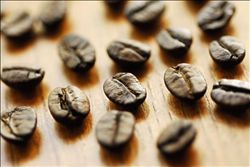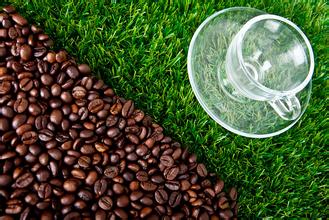What is the difference between coffee and coffee beans?
In fact, the word "Robbite" comes from the most widely grown variety of Canifra coffee. "Robbins" is a sturdy shrub or small tree, more than 10 meters tall, but its roots are very shallow. Its fruit is round, its maturity is 11 months, and its seeds are oval, smaller than Arabica coffee beans. Robbins coffee is grown in Midwest Africa, throughout Southeast Asia and in a region called Cornelon in Brazil.
The Lieberica Coffee Tree is tall and strong, 18 meters high, with large and tough leaves, large fruits and coffee beans. Lieberica coffee is grown in Malaysia and West Africa, and its production is small because of its unique taste and low demand.
At present, Arabica coffee accounts for about 70% of the world's total coffee production, but the proportion of Robbins coffee is increasing, mainly because the fruit quality of Robbins coffee tree is better, and it is less susceptible to diseases and insect pests than Arabian coffee villages.
Arabica coffee and Robbite coffee are harvested once every three or four years, and their lifespan is also different due to different production conditions and different degrees of care. Both varieties need plenty of sunlight and moisture. Arabian coffee trees like a seasonal climate of 15-24 degrees Celsius; Robbins prefer a warm equatorial climate, where temperatures are stable in the range of 24-29 degrees Celsius. When the temperature drops below zero, both kinds of trees freeze to death, and they need about 152.4 centimeters of rainfall each year.
The traditional method of growing coffee trees is to plant trees of similar species nearby in order to shade coffee trees and protect their fruits from strong light. In addition to reducing the damage caused by direct sunlight, these trees also help to retain moisture in the soil. Irrigation and the use of chemical fertilizers are more modern methods, but they require capital investment, which requires that production and income must be economical and cost-effective, so they are only used in commercial plantations.
Coffee can be grown on vast estates, farms of different sizes, or on small plots of land opened up in forests or farms. In Brazil and Guatemala, for example, many large estates are dedicated to growing coffee, while in Brazil, more and more people are using mechanical harvesters. Large-area farming has high yield, but also high input and cost; small-scale farms have small yields but lower costs.
The main factors of change in the process of coffee production are labor cost and land cost. The problem of high labor costs can be solved through the use of advanced technologies, such as chemical fertilizers, herbicides, pesticides and mechanized production and irrigation, but all of these methods require capital investment.

Important Notice :
前街咖啡 FrontStreet Coffee has moved to new addredd:
FrontStreet Coffee Address: 315,Donghua East Road,GuangZhou
Tel:020 38364473
- Prev

Roasting degree of coffee beans Coffee roasting technology Italian coffee machine extraction leakage
A series of chemical changes occur during the baking process. After about 5-25 minutes of baking (depending on the temperature selected), the green coffee beans lose some humidity and turn yellow. In this process, the coffee beans will swell, changing from a strong, high-density raw bean to a low-density fluffy state. After this process, the size of the coffee beans will about double, starting
- Next

How to control coffee grinding?
Coffee grinding In the Middle East, beans are still ground into particles of varying sizes, but when most people have gradually used bean grinders, Bella Sawarin personally conducted an experiment to determine whether ground coffee tastes better or ground coffee, both for public trust, and invited food critics to taste the two kinds of coffee
Related
- Does Rose Summer choose Blue, Green or Red? Detailed explanation of Rose Summer Coffee plots and Classification in Panamanian Jade Manor
- What is the difference between the origin, producing area, processing plant, cooperative and manor of coffee beans?
- How fine does the espresso powder fit? how to grind the espresso?
- Sca coffee roasting degree color card coffee roasting degree 8 roasting color values what do you mean?
- The practice of lattes: how to make lattes at home
- Introduction to Indonesian Fine Coffee beans-- Java Coffee producing area of Indonesian Arabica Coffee
- How much will the flavor of light and medium roasted rose summer be expressed? What baking level is rose summer suitable for?
- Introduction to the characteristics of washing, sun-drying or wet-planing coffee commonly used in Mantenin, Indonesia
- Price characteristics of Arabica Coffee Bean Starbucks introduction to Manning Coffee Bean Taste producing area Variety Manor
- What is the authentic Yega flavor? What are the flavor characteristics of the really excellent Yejasuffi coffee beans?

